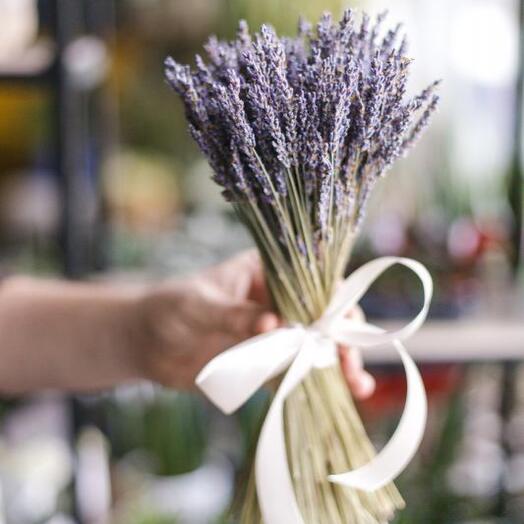Undeniable, delicate beauty that captures the essence of nature – what could that describe except mesmerising flowers? We love their vibrant hues and soft forms, but they always fade quickly. To save their natural appearance for years to come, consider the art of drying flowers, which allows for preserving a fresh bouquet’s splendour and significantly extending their time with us. Today, let’s discover how to dry flowers using 6 quick techniques without any resin.
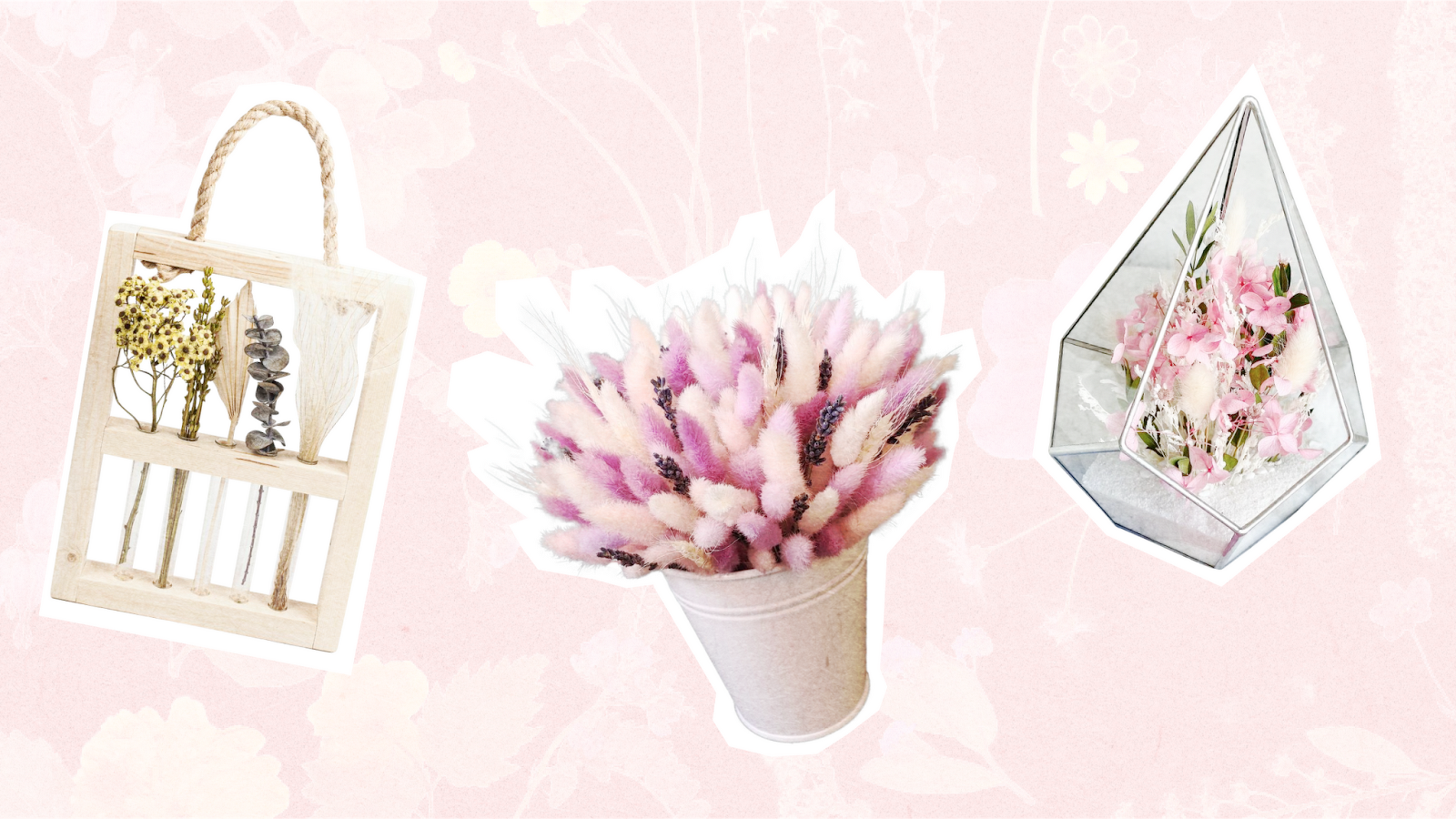
Which Flowers Are The Best For Drying?
Before digging into the most efficient approaches, take a moment to think about the specimens fit for their future role. Typically, any varieties with low levels of moisture and sturdy buds are head and shoulders above any others, regardless of the drying technique. So, choose lavender, roses, hydrangeas, baby's breath, sunflowers, and statice to prepare beautiful compositions that will maintain their charm for years.
How to Dry Flowers at Home
How to air-dry flowers

So, how to make dried flowers? The most convenient and hassle-free method is to take advantage of the air and allow nature to do the job for you. First of all, gather your favourite varieties and bind the stems together. Next, prepare a well-ventilated, dark room and hang the bouquets upside down. After a few weeks have passed, it’s time to see the results. However, keep in mind that the colours will slightly fade.
How to dry flowers using a desiccant
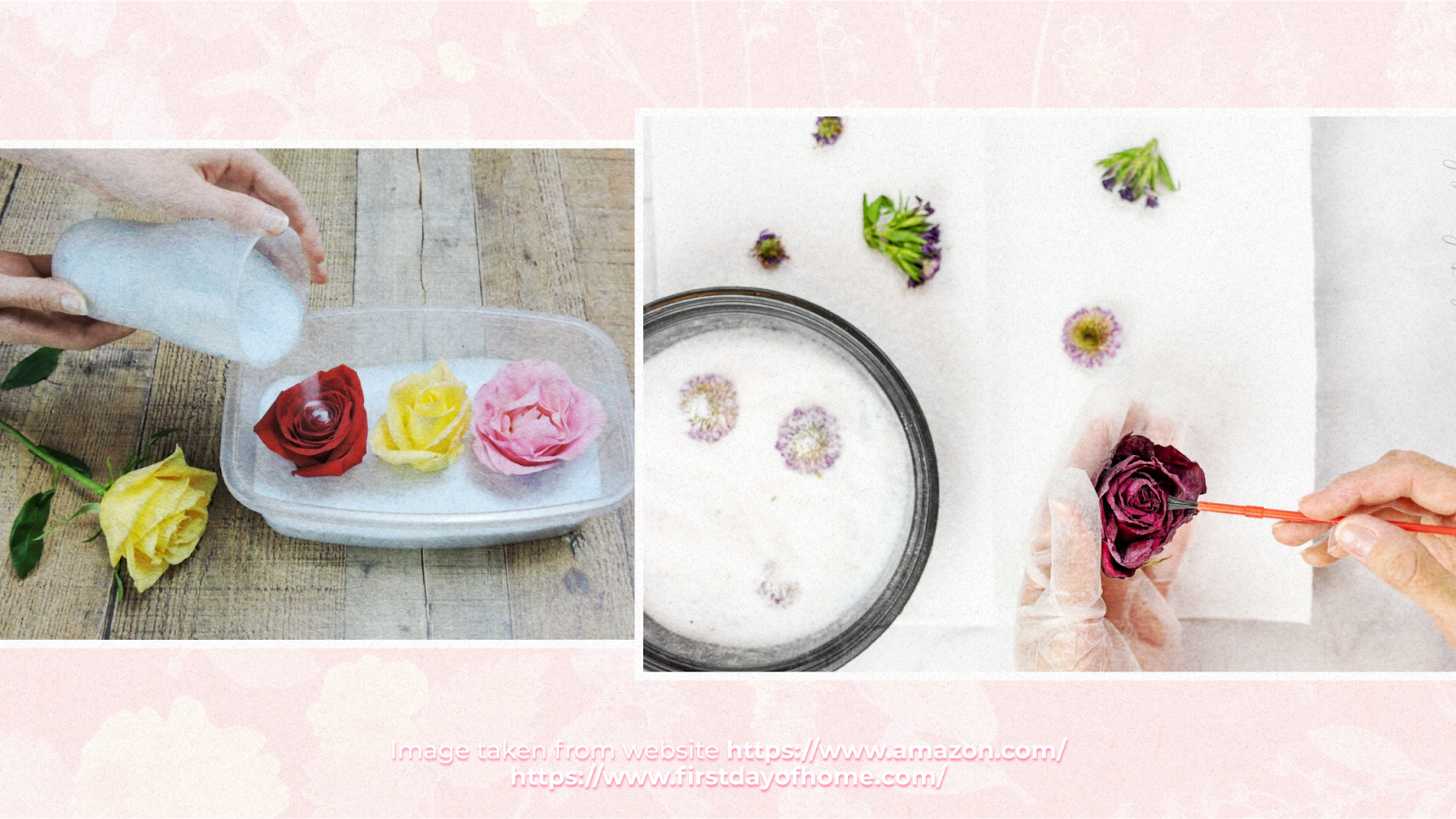
When you're short on time, you ought to know how to dry flowers quickly. As such, a top-notch solution in this scenario involves a desiccant, which is a special drying agent. The most effective desiccants include silica gel, sand, or just plain old salt. So, place your chosen mixture in a sturdy container until it takes up about one-third of the volume, assemble the flowers on top, and then fill the container up to two-thirds to completely bury the specimens. As a highly efficient technique, it takes only several days.
How to dry flowers in your microwave

Another tip on how to dry flowers without pressing employs an ordinary household microwave. Start by placing the buds on a paper towel or tissue, covering them with the paper or tissue, and using the microwave for 30-60 seconds. Make sure that you select half-power or defrost mode. This technique requires caution and experimentation, as each microwave has a different power setting.
How to dry and press flowers
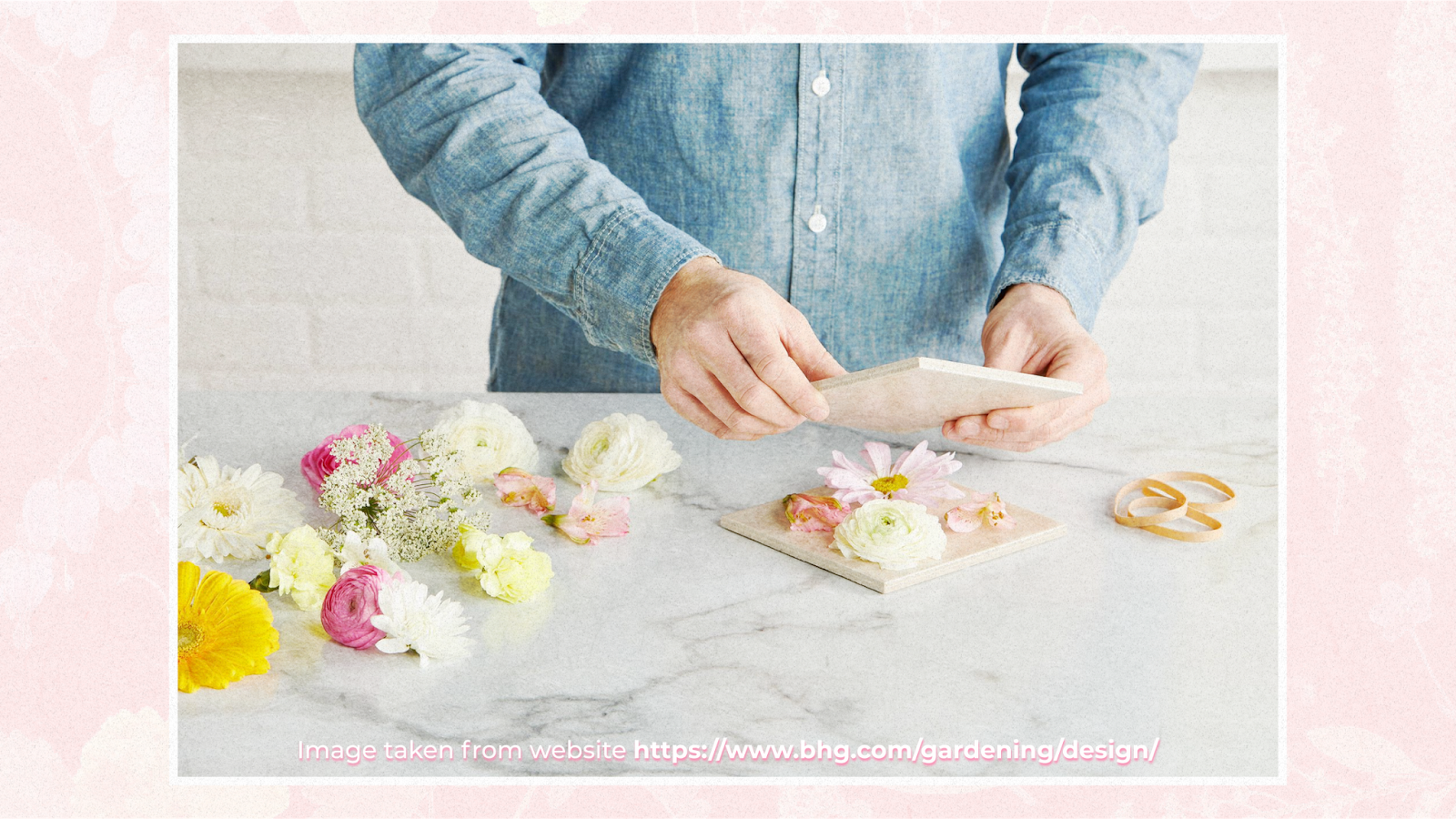
Pressing is an elegant solution for preserving delicate floral beauty without having to rely on costly resin. For this to work, cover a bunch of buds with paper or tissue, arrange them between the book’s pages, and put any additional weights on top. Usually, 3-4 weeks is enough to receive a reward with excellently pressed flowers.
How to dry flowers in a book
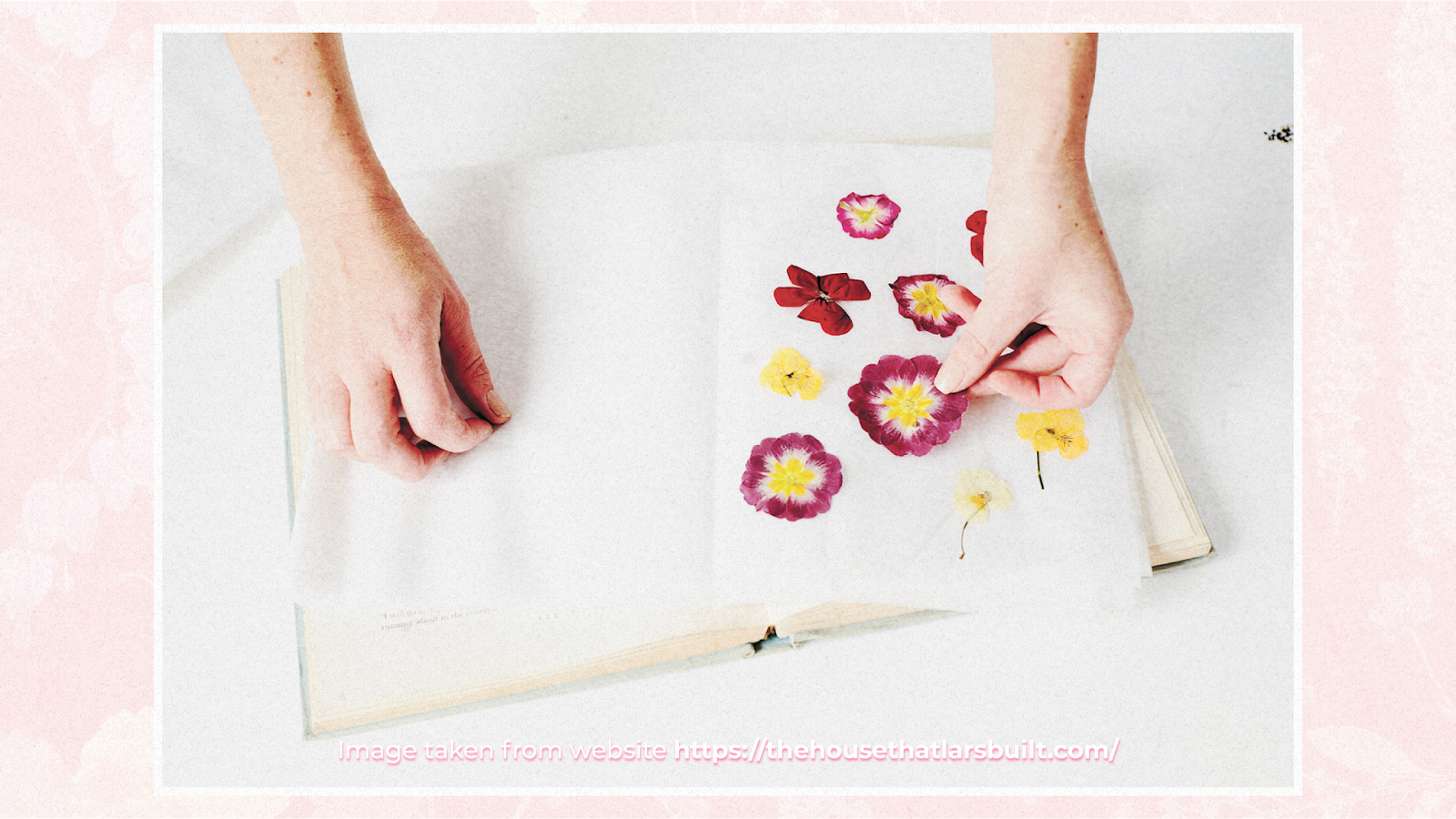
As with pressing, this trick is probably the oldest and most famous. Open any book, place buds or petals in it, and close it; add extra weight if you want higher-quality results. As before, the wait time is several weeks.
How to dry flowers for confetti
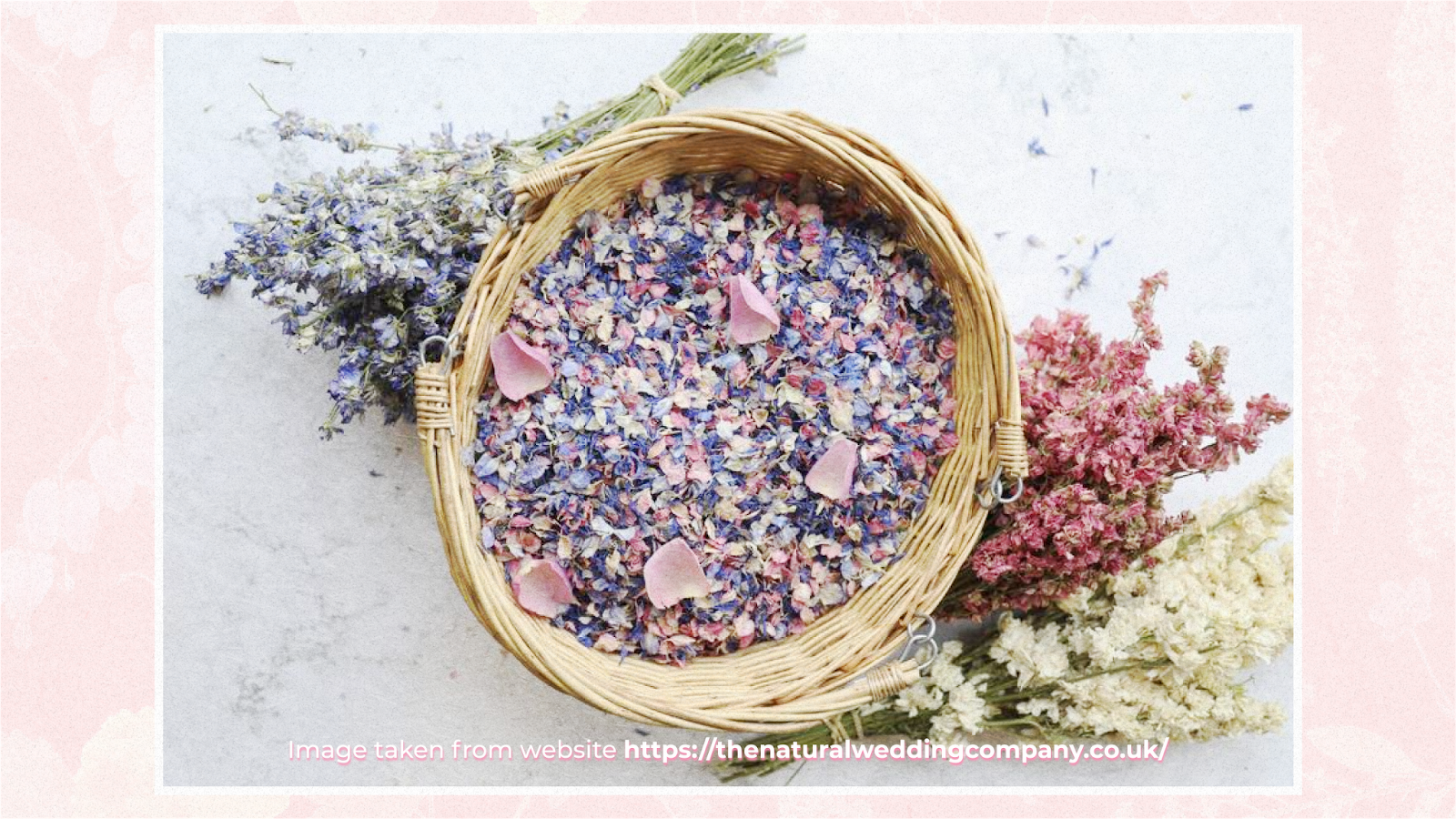
Nothing is more appropriate for weddings and celebrations than floral confetti. Such decorations are truly easy to make by air-drying the petals on a clean, flat surface until they lose all moisture and become brittle.
How You Can Use Dried Flowers At Home
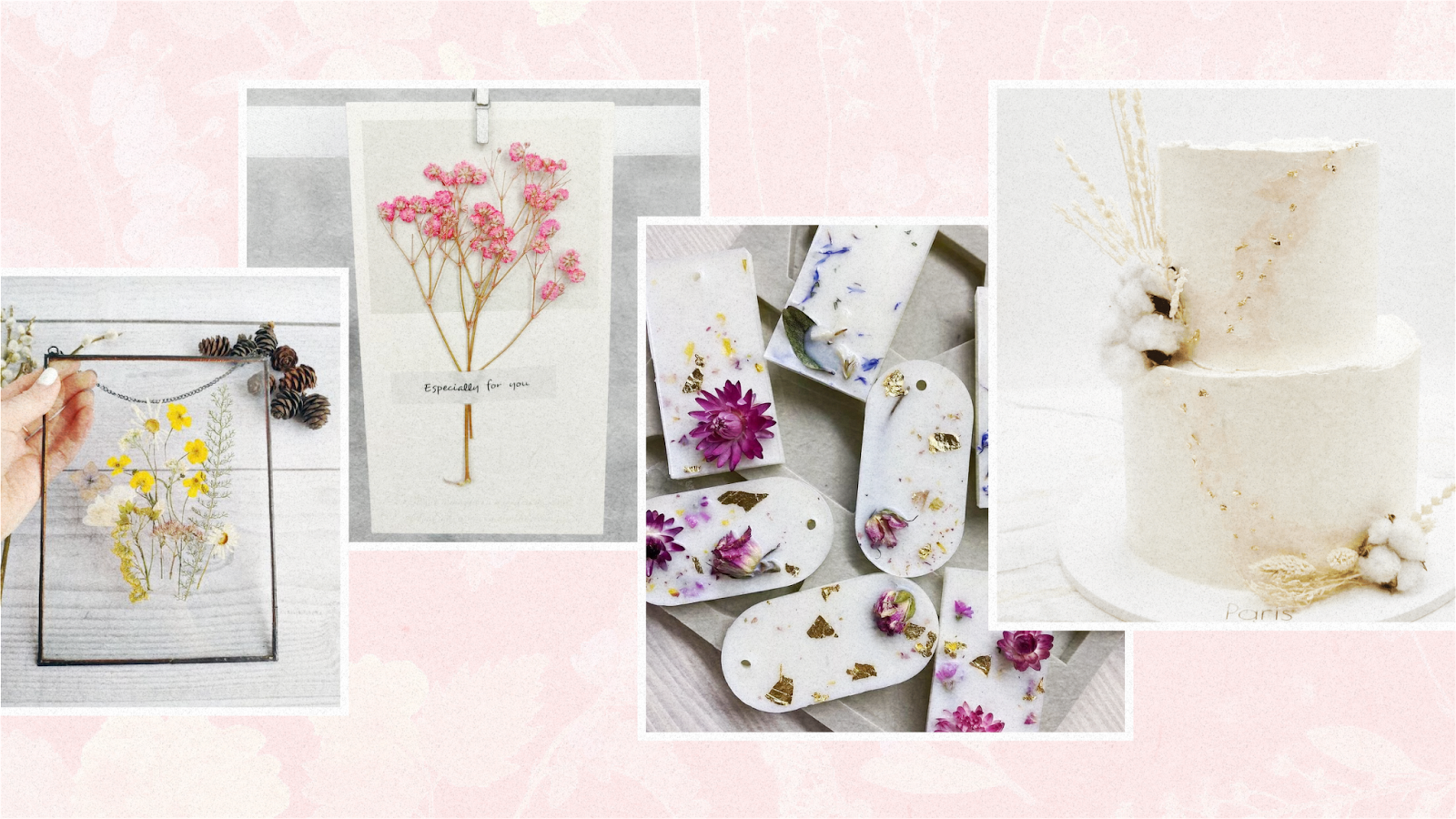
Dry florals are an excellent fit for countless adornments, presents, decor, and handmade items, as they offer a myriad of creative opportunities. To ignite your imagination, take a look at these ideas:
- Floral ornaments to spruce up your daily life. Attach the flowers to any paper using glue and frame it, assemble a wreath, or even make a garland with dry buds.
- Distinct greeting cards or bookmarks to surprise your loved ones. It’s a great addition to DIY items - any dry buds and leaves will make your recipient glow with happiness. Stick petals on a birthday card, a bookmark, or a handwritten letter for an extraordinary gift.
- Homemade potpourri to create the cosiest home. Extra fragrance in the air always creates a fantastic atmosphere. All you need is to add a couple of drops of essential oils to the floral mixture, sprinkle it with orris root powder, and enjoy the aroma.
- Dried rose, sunflower, or lavender to step up your culinary game. Believe it or not, most petals make an exquisite garnish for countless desserts. Alternatively, grind them in a blender and combine them with sugar to bake floral-infused sweets.
Care Tips for Dried Flowers
Knowing how to dry fresh flowers is just one step towards marvellous dry decor. If you want your creations to warm your heart and eyes for years to come, it’s crucial to offer them protection from sunlight and water. In addition, the room should have low humidity, as it causes quick decay. Unused dry flowers should be stored in an airtight container. Also, an occasional brushing to remove dust will help prevent decay.
Finally, before you ask us, ‘How long does it take to dry flowers?’, consider that each method has its own limits. Air-drying requires weeks of waiting and plenty of space, while the microwave technique only takes 30 seconds. So, to create wonderful dry flowers, make sure to adjust the time based on the process you’re going with.
FAQ:
What is the fastest, easiest way to dry flowers?
The microwave method is considered the best when you need quick results. Put the flowers in for just 30-60 seconds on medium power, and your arrangement is pretty much ready.
Should you hairspray dry flowers?
While hairspray is a tempting fix, it can leave a sticky residue and weaken the flower tissue. Instead, opt for natural preservation methods.
Can you dry flowers in the cooking oven?
Yes, if you tread carefully and maintain a low temperature. To avoid scorching the delicate petals, use the range between 65 and 90 degrees Celsius for 1-2 hours.
Can you dry flowers in an airing cupboard?
Yes, it’s where the air-drying method shines the most. Simply hang a bunch of flowers by the stems and let the airflow do the rest.
How do you dry out a rose?
This can be done by hanging it upside down in a well-ventilated room, pressing it in a book under enough weight, or relying on special drying mixtures.
Can you dry fresh flowers by ironing them?
This unexpected solution can certainly work, as heat and pressure force the moisture to evaporate. However, the key is to use the lowest setting for no more than 10 seconds.
Can you dry flowers in a warm room?
Technically, it’s possible, although it’s certainly not the desired environment. The flowers might take longer to dry evenly or even begin to soften and rot.
Can you dry flowers by using a hairdryer?
As something that provides heat, a hairdryer is an excellent alternative for drying. The hot air is optimal in this case, although it’s essential to protect your blooms with paper or tissue.
Why do you hang flowers upside down to dry?
The reason lies in the shape of the stems. In a vase, the stems can become crooked due to the bud’s weight.
Why are my dried flowers wet?
The most frequent reason is insufficient air circulation or excess humidity in the environment. Relocate the flowers to a dry, warm spot with good airflow.
Why did my dried flowers turn brown?
Some varieties can turn brown due to excess humidity or exposure to light. Ensure they are drying in a warm, dark place. However, sometimes it’s just the nature of things: specific flowers lose their colour when dried.
Do dried flowers attract moths?
Yes, dried flowers are incredibly alluring for moths. To keep any visitors at bay, store your dry plants in tightly closed boxes or lightly spray them with a natural insecticide.
When should you start drying flowers?
Make sure to choose the buds at their peak, when they’re fully open and start showing their vibrant colours. This way, they retain both beauty and shape.
Can I use salt to dry flowers?
Certainly, salt is the ideal preservative. It efficiently dehydrates the petals while maintaining vivid hues.
What flowers can’t be dried?
Thankfully, any variety can be dried when a suitable method is used. For instance, tulips, daffodils, and orchids require pressure drying, while larger specimens are best air-dried.
How do you condition flowers for drying?
Start by waiting for the full bloom to be sure your flowers dry evenly and retain their charm. After that, you can trim the stems and remove excess foliage.

